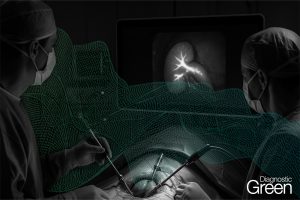Our aim was to investigate utility of indocyanine green (ICG) and autofluorescence (AF) imaging in detection of small bowel primary and metastatic carcinoids. Imaging findings were prospectively recorded in operating room and compared with conventional imaging, surgical exploration and pathologic findings.
Results: There were 16 patients with 23 primary small bowel tumors, 27 mesenteric lymph nodes, 36 liver metastases and 2 peritoneal nodules. Carcinoid tumors exhibited brighter AF signals compared to background. AF imaging was superior to both DOTATATE PET and surgeon inspection/palpation in demonstrating small bowel primaries. Utility for metastatic lymph nodes and peritoneal metastases was limited. Superficial liver metastases exhibited brighter fluorescence compared to background on both ICG and AF imaging.
Conclusions: This is the largest study assessing utility of near-infrared fluorescence imaging in detection of small bowel carcinoids. Our results show promise in the utilization fluorescence imaging to detect occult primary tumors and superficial liver metastases.




